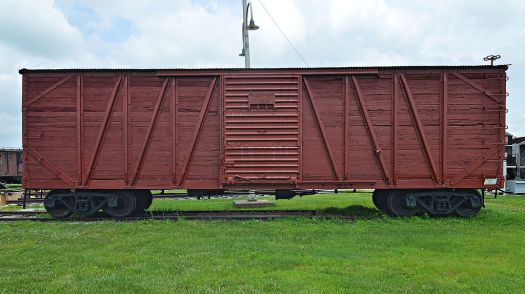
Dusk dark
On Railroad Avenue.
Lights in the fish joints,
Lights in the pool rooms.
A box-car some train
Has forgotten
In the middle of the
Block.
A player piano,
A victrola.
942
Was the number.
A boy
Lounging on a corner.
A passing girl
With purple powdered skin.
Laughter
Suddenly
Like a taut drum.
Laughter
Suddenly
Neither truth nor lie.
Laughter
Hardening the dusk dark evening.
Laughter
Shaking the lights in the fish joints,
Rolling white balls in the pool rooms,
And leaving untouched the box-car
Some train has forgotten.
Langston Hughes uses “Railroad Avenue” to draw a distinction between the modern and past African American spirit. Throughout the poem, Hughes continues to bring back image of a lonely boxcar that according to him, “some train Has forgotten”. The image of this boxcar sitting alone in silence is a symbol of the African American spirit in the past, which was suppressed into silence due to discrimination and slavery. The outside of Railroad Avenue is described as a place of silence and stillness. The boxcar perfectly describes this scenery, as it is alone and silent.
All of Railroad Avenue would continue to be like the boxcar if it wasn’t for the laughter that was littered throughout the poem. The laughter had completely changed what was going on inside Railroad Avenue. While the outside continued to be like the boxcar by staying in silence and remaining still in movement, the laughter inside spread throughout the avenue and transformed it. For example, Hughes describes a the beginning of the poem that a particular fish joint and pool room had the lights on. This creates the image that the rooms are motionless, thus, adding to the description of a dead and silent avenue. This essentially gives off a similar effect to what the boxcar was doing. However, Hughes adds laughter to the avenue and the scene goes from just having lights on in the fish joint and pool room to bringing these two rooms to life with physical shaking. This newly gained laughter and life on the street represents change in the African American spirit during the early twentieth century. At first, the spirit was similar to the boxcar and general description of Railroad Avenue at the beginning of the poem: quiet and still. However, the laughter that was later added in shows how the early twentieth century was slowly bringing life to the once dead African-American spirit.
Close Reading By: Devon M.
